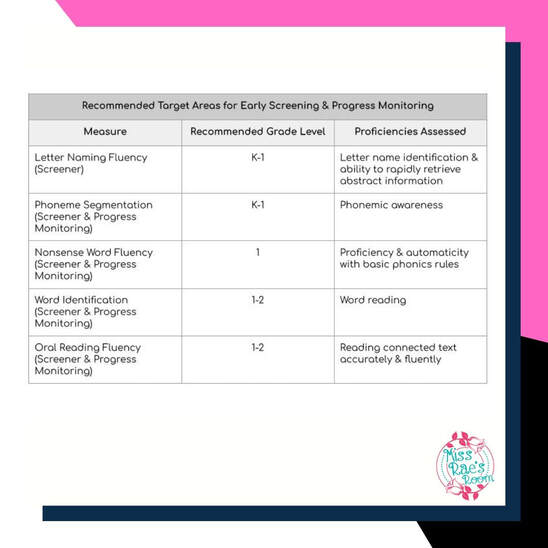|
RTI is a comprehensive and multi-tiered early detection and prevention strategy used to identify struggling students and provide intervention prior to the students falling behind. RTI combines universal screenings with high-quality instruction for all students with interventions targeted for struggling students (MTSS).
Here are the basics...
Tier One - reading instruction provided to all students. Instruction should be a high quality evidence-based reading instruction program with balanced, explicit, and systematic reading instruction that promotes both code-based and text-based strategies for decoding, word identification, and comprehension.
Tier Two - supplemental, small group reading instruction aimed at building foundational reading skills required to meet the general education expectations. Participating students demonstrate weaknesses on screening measures or in progress in the Tier One curriculum. Tier Three - interventions provided to students who do not progress after a reasonable amount of time with Tier Two instruction and require more intensive support. If difficulty persists after intensive intervention, students should be evaluated for Special Education eligibility. Things to consider...
*All tier curriculum should be high-quality and research-based
*All tier groups should be flexible *Tiers 2 & 3 should have consistent progress monitoring of small group instruction (It is recommended that Tier 2 be assessed monthly) *It is recommended that Tier 2 students receive small group 3 to 5 times weekly for 20 to 40 minutes *Tiers 2 & 3 instruction should be... **systematic - building skills gradually; introducing them first in isolation and then integrating with other skills to provide practice and generalization **explicit - involving a high level of teacher-student interaction with frequent opportunities to practice the skills and receive clear, corrective feedback *For Tier 3 students, recommended instruction times range from 45 to 120 minutes per week. In most cases, it is recommended to offer a “double dose” of reading time (introduce skills during one session, re-teach with added practice during the second session *Include opportunities for extensive practice (10 to 30 times as many practice opportunities as peers) and high-quality feedback with one-on-one instruction (or small group if necessary). *Scaffolded instruction is recommended using multi-sensory supports. *Targeted comprehension proficiencies (summarizing, use of story grammar elements, vocabulary development, listening comprehension development) need to be part of Tier Three interventions. More things to consider...
RTI & MTSS can be overwhelming for classroom teachers and schools!
Grab this RTI Response to Intervention in Reading Implementation Guide provides educators and schools with a step-by-step guide for implementing a Response to Intervention model paired with a Multi-Tiered System of Support for ALL students in reading! Use this guide to learn how to monitor and remediate student progress! This guide will give you everything you need to implement RTI and monitor students' progress in your classroom or school.
1 Comment
|
CategoriesAll Comprehension CoPlanning CoTeaching Directed Reading DIY Fluency Fountas & Pinnell Graphic Organizers Guided Reading Lesson Planning Multi-Tiered Systems Of Support Phonological Awareness RAN Read And Respond Reading Reading Assessments Reading Comprehension Response To Intervention RTI Science Of Reading Science Of Reading For Special Education Teachers Special Education Special Education Eligibility Special Education Lesson Planning Teaching Strategy Visualizing & Verbalizing Visual Texts Vocabulary Writing Writing In Response To Reading |






 RSS Feed
RSS Feed